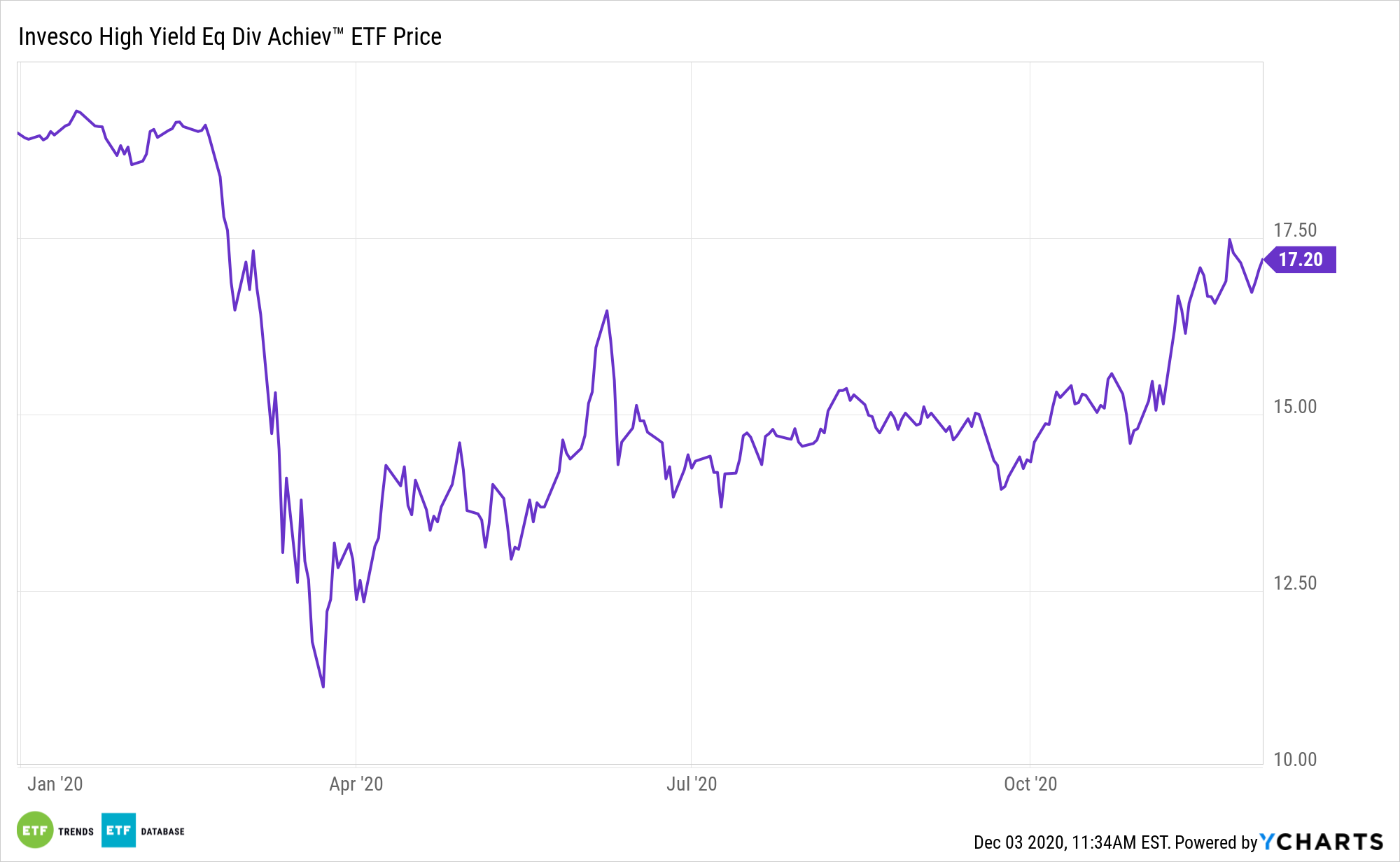Exchange traded funds with an emphasis on dividends have become increasingly popular. But not all dividend ETFs are created equal. Some sport higher expense ratios that can erode yields and total returns.
At a time when dividend growth is just starting to rebound from some rocky times in the first half of 2020, the PowerShares High Yield Equity Dividend Achievers Portfolio (NYSEArca: PEY), which yields an impressive 5.21%, stands out.
PEY tracks the NASDAQ US Dividend Achievers 50 Index, which “is comprised of 50 stocks selected principally on the basis of dividend yield and consistent growth in dividends,” according to Invesco.
Stocks with steady dividend yields reassure investors of a company’s strong financial health. Additionally, dividend-paying stocks typically outperform those that do not pay over the long haul, with less volatility, due to the compounding effect of dividends on the investment’s overall return. Over the past 40 years, companies that boost payouts have proven to be less volatile than their counterparts that cut, suspended, or do not initiate or raise dividends.
More PEYdays for the PEY ETF?
Looking toward PEY’s prospects for 2021, the ETF has some leverage with coronavirus vaccine developments.

“As you might expect, the high yield targeting component leads to overweights in areas of the market, such as utilities and financials, that may be more economically sensitive. In order to reasonably expect PEY to outperform over the next 12 months or so, we really need to see follow-through on the vaccine development, a slowing of the coronavirus spread and a corresponding recovery that would come with a wide-scale reopening,” according to Seeking Alpha.
Dividends have added significantly to returns over time, contributing approximately 32% of the S&P 500’s total return since 1960. During the return-challenged 1970s, dividends made up nearly three-quarters of S&P 500 returns – while investors earned a cumulative total return of 77% from the S&P 500 in that decade, 60% of that 77% was from dividends.
Investors should consider quality dividend growth stocks that typically exhibit stable earnings, solid fundamentals, strong histories of profit and growth, commitment to shareholders, and management team conviction in their businesses.
PEY offers income hunters some value at a time when that’s hard to come by.
“A U.S. stock portfolio with a forward P/E of just 12 is about as cheap as you’ll find unless you start digging around in pure turnaround plays. When you see P/E ratios this low, you should be a bit skeptical. There’s a chance that some of these stocks are cheap because their stock price has taken a dive, earnings are about to be revised downward, the dividend is about to be cut or some combination of all three,” notes Seeking Alpha.
For more on innovative portfolio ideas, visit our Nasdaq Portfolio Solutions Channel.
The opinions and forecasts expressed herein are solely those of Tom Lydon, and may not actually come to pass. Information on this site should not be used or construed as an offer to sell, a solicitation of an offer to buy, or a recommendation for any product.

